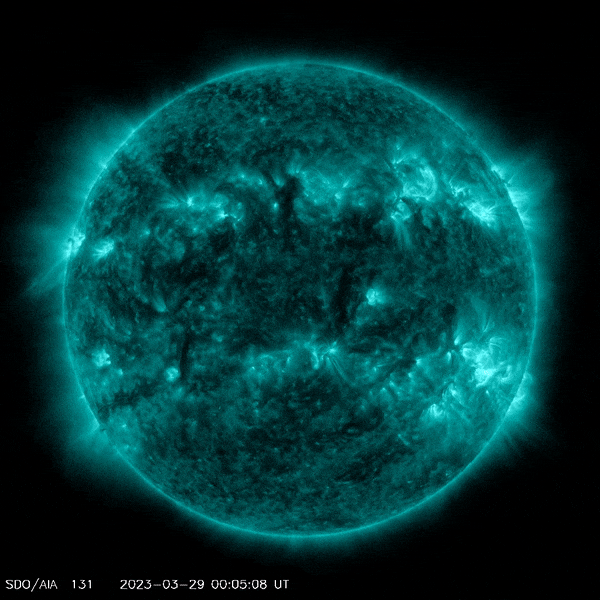In the late evening of March 28, 2023, the Sun emitted a strong solar flare. This event caused some limited and temporary radio interference – and, in some cases, blackouts – on the Sunlit part of the planet. At the time, the area included Asia and Oceania.
The flares were an X-class: the strongest class of flares in our logarithmic classification that puts flares in an A, B, C, M, or X class. X is ten times M, which is ten times C, but any C flare or lower does not affect Earth. This recent one was an X1.2 flare – significant, but not among the strongest we have seen in this solar cycle, especially in the last few months.

Solar Dynamics Observatory images of the Sun with the flare in the bottom right of the Solar Disk. Image Credit: NASA/SDO
If it feels like there is a lot of discussion about flares and coronal mass ejections and holes in the Sun, it is because the Sun is very active right now. This is expected, as the Sun is moving towards the maximum of its activity for this solar cycle, which is the 25th since records began – but even accepting that the Sun is wide awake, these last few months have been a lot more active than models had predicted, which is very exciting.
There is a lot that we still don’t know about the variability of the Sun and potential longer duration cycles that might enhance or suppress how active our star is. While this flare affected our planet, the Sun can get much more powerful. Using modern methods, the most powerful flare was recorded in 2003, and it was at least an X28 – so powerful it overloaded the sensors measuring it.
The new flare was reported by NASA’s Solar Dynamics Observatory which monitors the Sun constantly.
Source Link: The Sun’s Truly Awake As New X Flare Erupts From Its Atmosphere